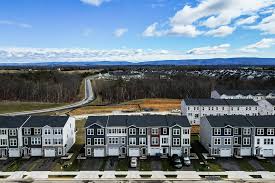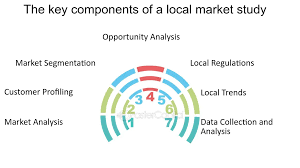As we move into 2024, the residential real estate market continues to evolve, influenced by shifting economic conditions, technological advancements, and changing consumer preferences. Understanding the latest trends can help buyers, sellers, and investors make informed decisions in this dynamic environment. This article explores the key trends shaping the residential real estate market in 2024, providing insights into what to expect and how to navigate the market effectively.
1. Rise of Remote Work and Its Impact on Housing Preferences

Overview: The remote work trend, accelerated by the pandemic, continues to influence residential real estate. With many companies adopting hybrid or fully remote work models, individuals are re-evaluating their housing needs and preferences.
Key Trends:
- Demand for Home Offices: As remote work becomes more common, buyers are increasingly seeking homes with dedicated office spaces. Properties with flexible rooms that can be converted into home offices are in high demand.
- Suburban and Rural Relocations: With the possibility of working from anywhere, many individuals are moving away from urban centers to suburban or rural areas. This shift is driven by a desire for more space, lower costs, and a higher quality of life.
- Increased Focus on Home Amenities: Features like high-speed internet, quiet workspaces, and outdoor areas are becoming essential for homebuyers. Properties that offer these amenities are likely to attract more interest.
Why It’s Important: Understanding the impact of remote work on housing preferences helps buyers and sellers align their expectations with current market demands. For real estate professionals, recognizing these trends can guide marketing strategies and property recommendations.
2. Sustainable and Energy-Efficient Homes
Overview: Sustainability and energy efficiency are increasingly important factors in residential real estate. Homebuyers are becoming more conscious of their environmental impact and are seeking homes that align with their values.
Key Trends:
- Green Building Certifications: Homes with certifications such as LEED (Leadership in Energy and Environmental Design) or Energy Star are in demand. These certifications signify that a property meets high standards for energy efficiency and sustainability.
- Renewable Energy Installations: Solar panels, energy-efficient windows, and smart home systems are becoming more common. Buyers are looking for homes that incorporate renewable energy solutions and reduce utility costs.
- Eco-Friendly Materials: The use of sustainable building materials, such as reclaimed wood and low-VOC paints, is gaining popularity. These materials not only reduce environmental impact but also enhance indoor air quality.
Why It’s Important: The growing emphasis on sustainability and energy efficiency reflects broader societal trends toward environmental responsibility. Real estate professionals should be aware of these preferences and highlight eco-friendly features in property listings.
3. Technological Advancements in Real Estate
Overview: Technology continues to transform the residential real estate market, making it easier for buyers and sellers to connect and streamline transactions.
Key Trends:
- Virtual Tours and 3D Imaging: Virtual tours and 3D imaging technologies are becoming standard tools in real estate marketing. These technologies allow buyers to explore properties remotely and make informed decisions without physically visiting each home.
- Smart Home Technology: Smart home features, such as automated lighting, security systems, and climate control, are increasingly sought after. These technologies offer convenience and enhance the overall living experience.
- Blockchain and Digital Transactions: Blockchain technology and digital transactions are beginning to make their way into real estate. These innovations promise to simplify property transactions, reduce fraud, and enhance transparency.
Why It’s Important: Keeping up with technological advancements is crucial for real estate professionals to stay competitive. By leveraging these technologies, agents can provide a better experience for clients and streamline the buying and selling process.
4. Shift Towards Smaller, More Affordable Homes

Overview: In response to rising home prices and changing lifestyle preferences, there is a noticeable shift towards smaller and more affordable homes.
Key Trends:
- Tiny Homes and Micro-Apartments: The popularity of tiny homes and micro-apartments is on the rise, especially among first-time buyers and those seeking to downsize. These compact living spaces offer affordability and efficiency.
- Affordable Housing Initiatives: There is growing support for affordable housing initiatives and programs aimed at addressing the housing crisis. Developers and policymakers are working together to create more accessible housing options.
- Flexible Living Spaces: Homes with flexible layouts that can adapt to different needs, such as multi-generational living or shared spaces, are becoming more desirable.
Why It’s Important: The shift towards smaller and more affordable homes reflects broader economic and social trends. Real estate professionals should be aware of these preferences and consider them when working with clients.
5. Focus on Health and Wellness
Overview: The focus on health and wellness has extended to residential real estate, with buyers increasingly seeking homes that promote a healthy lifestyle.
Key Trends:
- Indoor Air Quality: Homes with advanced air filtration systems and non-toxic materials are in demand. Buyers are prioritizing indoor air quality to ensure a healthy living environment.
- Fitness and Wellness Spaces: Home gyms, yoga studios, and wellness rooms are becoming popular features. Buyers are looking for homes that offer dedicated spaces for fitness and relaxation.
- Access to Outdoor Spaces: Properties with access to parks, trails, and outdoor recreational areas are highly sought after. Buyers value proximity to nature and outdoor amenities that support an active lifestyle.
Why It’s Important: The emphasis on health and wellness reflects growing awareness of the impact of living environments on overall well-being. Real estate professionals should highlight features that promote health and wellness in property listings.
6. Market Trends and Investment Opportunities
Overview: The residential real estate market is influenced by various economic and market trends that create opportunities for investors.
Key Trends:
- Rising Home Prices: Home prices continue to rise in many areas, presenting both opportunities and challenges for investors. Identifying emerging markets and neighborhoods with potential for appreciation can be beneficial.
- Rental Market Growth: The rental market is experiencing growth, driven by increasing demand for rental properties. Investors may find opportunities in rental properties and multi-family units.
- Real Estate Technology Investment: Investment in real estate technology, such as property management software and investment platforms, is on the rise. These technologies offer innovative ways to manage and grow real estate portfolios.
Why It’s Important: Understanding market trends and investment opportunities helps investors make informed decisions and capitalize on emerging trends. Staying informed about market conditions can enhance investment strategies and profitability.
7. Importance of Local Market Insights

Overview: While national trends provide a broad overview, local market insights are crucial for understanding specific opportunities and challenges in residential real estate.
Key Trends:
- Regional Variations: Real estate trends can vary significantly by region, city, or neighborhood. Local market conditions, such as job growth and housing supply, influence property values and demand.
- Community Preferences: Local community preferences and lifestyle trends play a role in shaping real estate demand. Understanding these preferences can help tailor property offerings to meet local needs.
Why It’s Important: Local market insights provide a detailed understanding of specific real estate conditions and opportunities. Real estate professionals should stay informed about local trends to better serve their clients and make strategic decisions.
Conclusion
As we navigate the residential real estate market in 2024, staying informed about the latest trends is essential for making informed decisions and achieving success. From the impact of remote work on housing preferences to the emphasis on sustainability and technology, the real estate landscape is evolving rapidly. By understanding these trends and adapting to changing market conditions, buyers, sellers, and investors can make strategic choices that align with their goals and preferences. Whether you’re looking to buy a new home, sell your property, or invest in real estate, staying abreast of current trends will help you navigate the market effectively and make the most of opportunities in 2024.


